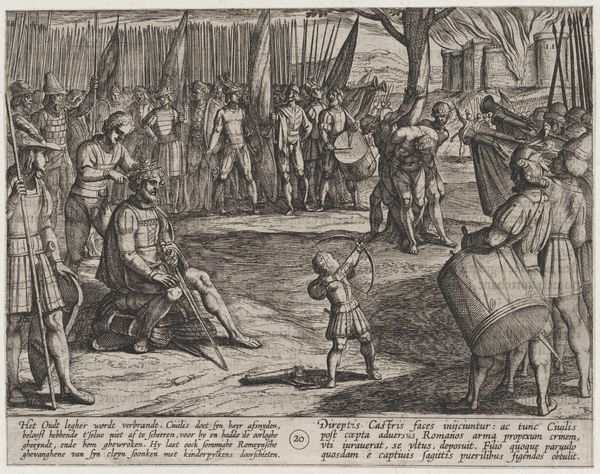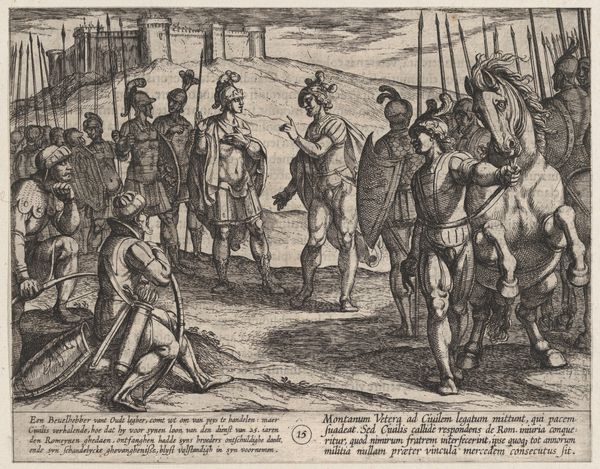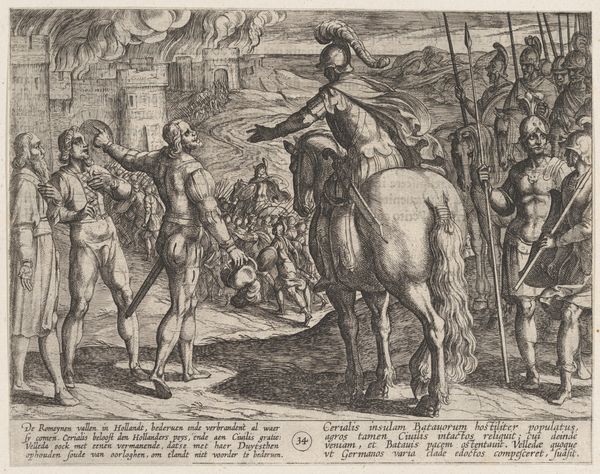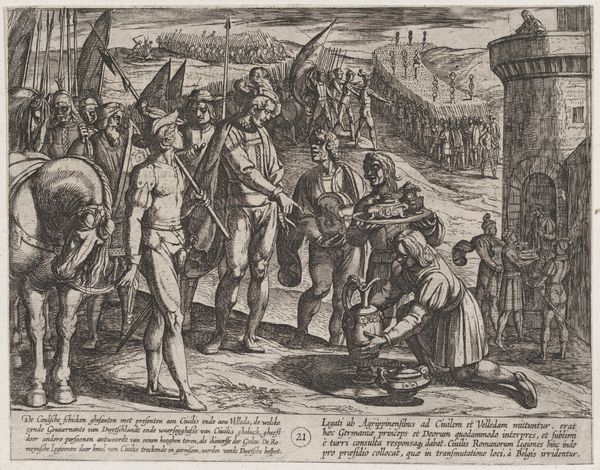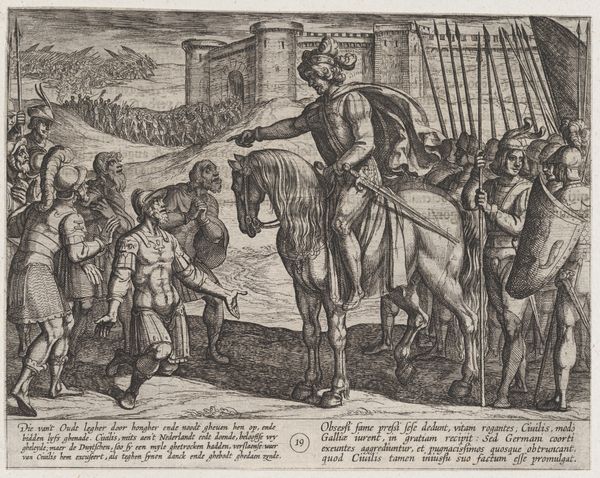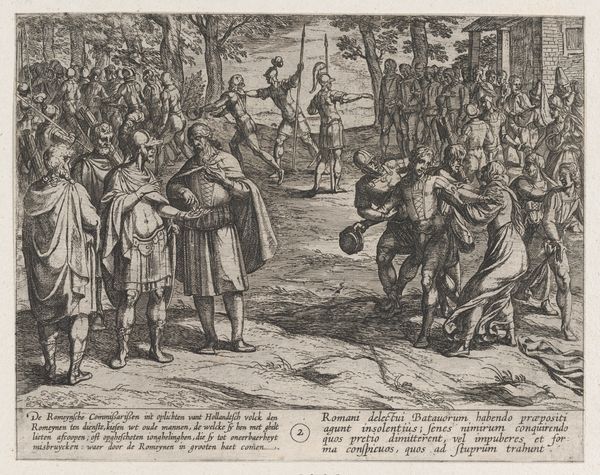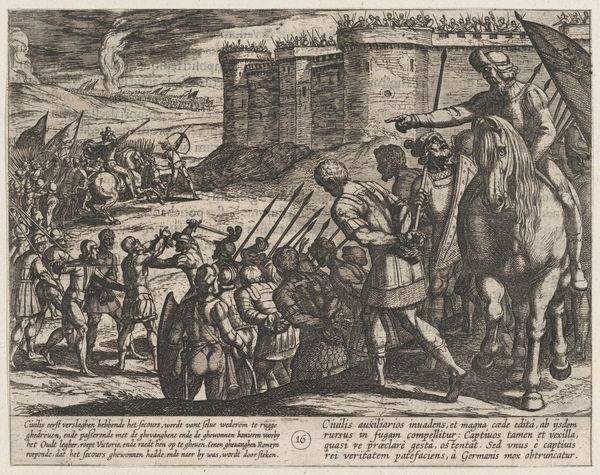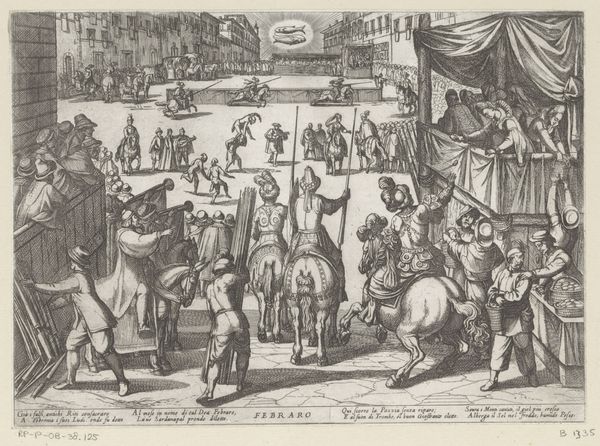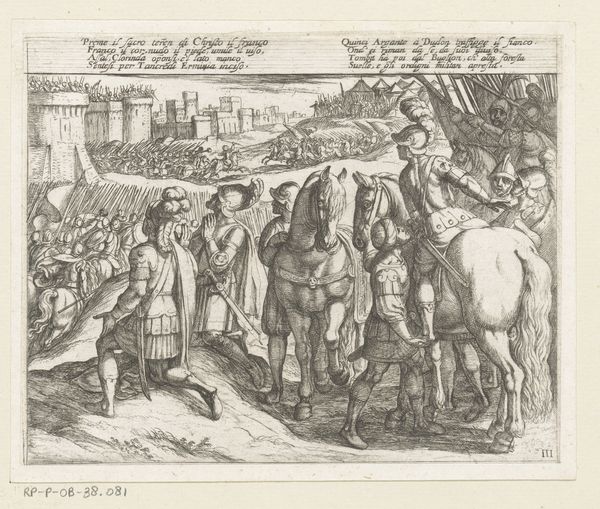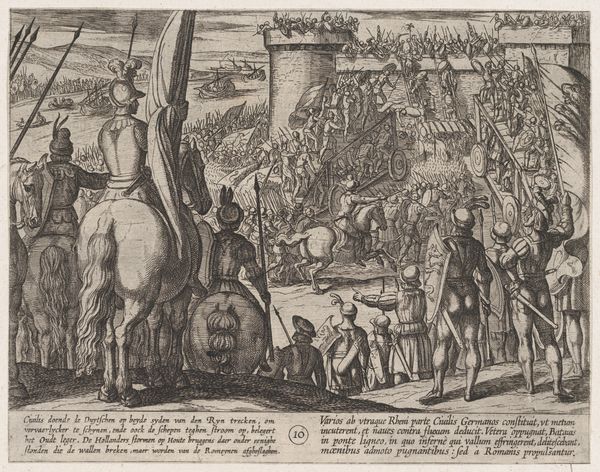
Plate 5: Bruno Appointed Leader of the Caninefates, from The War of the Romans Against the Batavians (Romanorvm et Batavorvm societas) 1611 - 1612
0:00
0:00
drawing, print, engraving
#
drawing
#
narrative-art
#
baroque
# print
#
war
#
figuration
#
horse
#
history-painting
#
engraving
Dimensions: Sheet: 6 5/16 × 8 1/16 in. (16 × 20.5 cm)
Copyright: Public Domain
Curator: The detail in this engraving is astounding. The eye moves everywhere at once. Editor: It's rather dramatic. There’s something immediate about the upward-looking faces and raised weaponry, but who are these figures? Curator: Let's delve in. This is "Plate 5: Bruno Appointed Leader of the Caninefates, from The War of the Romans Against the Batavians (Romanorvm et Batavorvm societas)." It was created by Antonio Tempesta around 1611 or 1612. As the title suggests, the artwork depicts Bruno's appointment as leader of the Caninefates. Editor: Caninefates? Tell me more. I want to understand this scene within its context. Curator: Absolutely. The Caninefates were a Germanic tribe inhabiting the coastal regions of what is now the Netherlands during the Roman Empire. The engraving illustrates a pivotal moment: the elevation of Bruno onto a shield, signifying his appointment. Note the throng of figures surrounding him. They are eager West Frisians and inhabitants of the northern Netherlands. These groups support him in his defiance against Roman authority, an attempt at self-determination, even sovereignty. The plate is part of a larger series documenting the Batavian revolt against Roman rule. It reflects a broader early modern interest in histories of resistance against empire, in particular those centered in or around the low countries. Editor: What strikes me is Tempesta's technique here, his precise engraving creates depth through dense cross-hatching. The contrast of light and shadow, gives the scene dynamism. Visually, the figure on the shield really becomes the focal point due to the white circle, almost an orb or halo, beneath his feet. What could have become a chaotic jumble of people achieves clarity and visual focus through these simple decisions. Curator: Right, and this dynamism can be interpreted in connection to Baroque sensibilities, embracing movement and emotional intensity, using these visual strategies to communicate historical events. In looking, we gain insight into a 17th-century perspective on historical events, and, more importantly, Tempesta is advancing the history of people seizing power and their own self-image. Editor: Indeed, seeing that image constructed like this gives me a much broader view, and in thinking through the interplay of darkness and light in Tempesta’s work, the figures in shadow gain greater narrative weight.
Comments
No comments
Be the first to comment and join the conversation on the ultimate creative platform.

